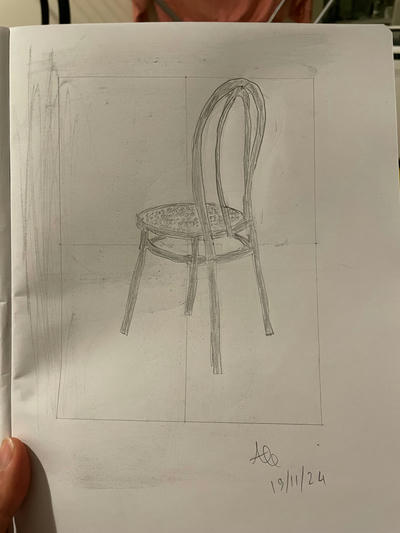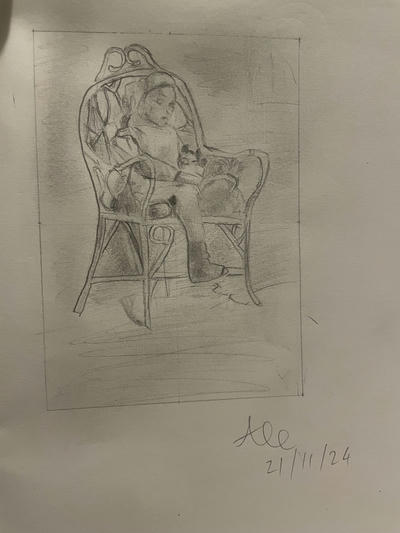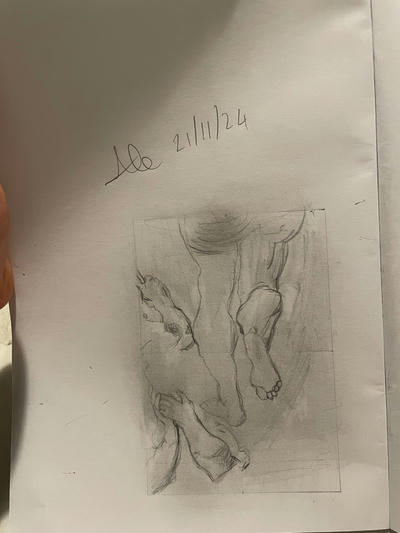I did some exercises from the Drawing on the Right Side of the Brain by Betty Edwards book around negative spaces.
A "negative space" is roughly everything that's not a "positive form" (i.e. an object or a person or a phisical part of a person). It can be the space between the fingers of a hand, the space between two objects, the space between the legs of a chair, etc...
Negative spaces in drawing are very "real" and not taking them into account makes the drawing composition look wrong. Betty Edwards through the book teaches to use the negative space to turn off the "L-mode" of the brain: because negative spaces share a border with positive forms, if you draw them you will end up with the positive forms drawn too, with the advantage of having your brain "switch off" the little voice that tells you that a hand should be drawn a certain way.
i I've partially made use of the negative spaces concepts in my foreshortening exercises, but here I'm taking them a step further by focusing on them directly.
I've done three drawings with this focus:
- A chair in my living room
- A copy of "Child Seated in a Wicker Chair" by Winslow Homer
- A copy of "Studies of Arms and Legs" by Peter Paul Rubens
A chair in my living room

You can see how many negative spaces there are to draw! For this exercise, the book also tells you to define a "one", i.e. a small part of the chair that will drive the proportions of the rest. I drew a small negative space corresponding to one of the sections below the chair on the viewfinder, copied it on paper, and then drew the rest of the chair. This process took me a few hours, but I'm pretty happy with the result!
Child Seated in a Wicker Chair

If you are unfamiliar with the reference, this is the original piece. This was very hard! I still have to learn about setting values, and clearly here it would have helped. Also I couldn't get the face of the child right despite my many attempts! This took me like 6 hours... the result is not great, but at least I think I did ok on the negative spaces of the chair.
Studies of Arms and Legs

I drew this upside down first, and then flipped it and refined some details. Again, here is the reference. Here I think I did quite well, especially the legs. You can see how negative spaces (e.g. the one between the legs) here are really important to get right also for the foreshortening effect.
That's all for this time. I already started studying perspective (the next chapter in the book), but I'll blog about it later.